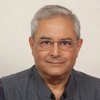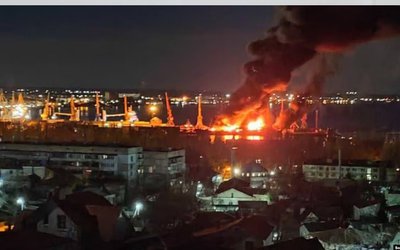
In Kathmandu’s current degraded public discourse milieu that is confined to opportunistic political shenanigans of our Loktantricksters, two recent June events came as an oasis in a desert. The first was Dr Sagar Prasai discussing the timeline of Eastern and Western philosophical curiosities across recent human history. It was organized by Nepal Darshan Adhyan Samaj, a gathering of the capital city’s (mostly young) philosophy enthusiasts. The other was a provocatively titled talk by Hari Roka: “Why has Nepali Left gone downhill?” Chaired by the current vice-chancellor of Kamaladi’s Nepal Academy and organized by Nepal Alternative Studies Society, the gathering consisted primarily of Marxist intellectuals still true to their beliefs but dejected because of its blatant desecration by politicians across the mainstream Left spectrum. Indeed, the mood in the hall felt like that of an orphanage with wards in deep depression induced by their parents’ betrayal.
Both events, confined though they were to their current narrow circles, are critical seeds of related philosophical interrogations that will need to grow and spread if Nepal’s future is to see any renaissance, starting with the intellectual and proceeding on to social and economic. And it will need to be framed within a larger cultural and civilizational context to allow for explorations beyond confined topics, often determined by Western donor agencies. It is already happening with our giant neighbours to our north and south. In March, Xi Jinping proposed a Global Civilization Initiative that calls for respect for diversity of civilizations (and implied challenge to the hegemony of European definition of modernization which is inviting alarm in Western thinktanks).

India’s Modi, when recently inaugurating a rather grandiose new parliament building, did two things that pointed in the same direction as Xi but, India’s politics being Bollywood-infused, invited quite a media uproar. The first was to install the Raj Danda (Sengol of the Chola dynasty, a symbol of the ruler upholding Raj Dharma), relegated by Nehru to his family museum in Allahabad as his “walking stick”, next to the new seat of the Speaker of Indian parliament. It was a powerful reinterpretation of the symbolic legitimacy of India’s ruler beyond the procedural aspects of elections and other imported features. The other was to display a map of South Asia depicting ancient kingdoms, never really one country except to a significant extent under British rule, as “unified India”, which has sparked protests in neighbouring countries as creeping imperial aggression on their territories. In truth, it was a misplaced attempt at civilizational hijack conflating cultural with the current political.
Both the Chinese and the Indian assertions, as well as currently African and South-East Asian as the boundary fault line of Indic and Sinic civilizations, are bound to play a greater role in governance debates in the years ahead. It is not just the post-World War-II Bretton Woods defined Pax Americana world order that is being challenged – via de-dollarization and new political alignments – by a more assertive multipolarity: it is also modernity as equated with Westernization. This is where the Prasai-Roka efforts, very small though they may be, carry greater meaning as nascent efforts to understand this global tectonic shift underway and requiring many such endeavours in the days ahead.
Civilization as a unit of study has been put forth by many scholars, most notably Arnold Toynbee, but it was downplayed and ultimately banished in Western academia by mainly its Marxist-leaning historians that preferred to smudge all such boundaries with categories of class and the Westphalian nation-state. His ideas are making a comeback, not just as “clash of civilization” as Huntington so crassly postulates, but as a much more dynamic living social entity that rose, flowered, engaged with other civilizations, went into decline and often morphed into a successor civilization that imbibed the suppressed values of both its internal and external (‘barbarian’) proletariat. By proclaiming the equivalence of all civilizations, he has more than any other intellectual figure struck down the idea that Western civilization as currently avails is the consummation of entire human history. The idea of Western hegemonism, however, still lives as can be seen when its officials proclaim Europe as a garden and the rest of the world as a jungle. Despite such arrogance of the hegemons, the study of comparative civilizational philosophies by those relegated to the margins must start – and find their most fertile seeds – in the works of Toynbee, and then of Stavrianos (below) as well as the better and more relevant in the post-Soviet era non-Marxist political economy of Karl Polanyi.
This peripheralization of other civilizations by Western civilization has happened since the 15th century after it gave birth to capitalism. Historian Stavrianos has examined this process in his classic Global Rift, where he analyses the history, not of civilizations as Toynbee does much less of countries as others have done, but of the very process of Third World-ization. While Marx, Lenin and Rosa Luxemburg have all contributed to the understanding of capitalism’s imperial expansion through colonization and its unequal terms of trade, it is Stavrianos who links it to the very conditions at the extreme western end of the Eurasian peninsula that gave birth to capitalism. It consisted of several historical “accidents”: the lack of a resource-sucking empire after the collapse of the Roman order and its replacement with decentralized power centers and their self-sufficient manor economics; lack of slave-holding order due a Christian faith that grew out of Roman slavery and hence forbade it within themselves (but in the rest of the world they practiced it with gusto!); the Black Death plagues that decimated the labour force prodding the search for labour-saving devices and technologies; a Protestant Reform that curtailed the power the Roman Papacy that not only elevated labour (“to labour is to pray to God”) but also removed intellectual shackles of the Church that allowed modern science to take root; and doing away with religious ban on usury to allow the flourishing of mercantile capitalism.
These historical factors allowed an European Renaissance in the sciences, with no mean contribution of the Christian Crusades against Middle East Islamic infidels that allowed the Western world to re-discover not just Greek philosophy anew but also Islamic and Hindu mathematics as a side bonus. The groundwork for opening up Judaic values into the declining Roman world was done by the 5th Century theologian St Augustine of Hippo with his City of God. That of integrating Greek philosophy (especially Aristotle and thus the basis of modern science) was done at the end of the Crusades in the 13th Century by St. Thomas Aquinas, which was followed by the European Renaissance. As one reflects on Western philosophy and its absorption of Judeo-Christian and Greek thought traditions, it must be remembered that it was the result of often violent conflicts including the Inquisition that saw the burning of “heretics” at the stake. It must also be remembered that over the millennia, the growth of Western philosophy, despite these violent upheavals, was organic which allowed its modern universities to grow out of its religious monasteries. In contrast, modern universities of South Asia are Western transplants that have little umbilical connection with their own past traditions.
That is now being challenged mainly by scholars in India. Philosophers like Sundar Sarukkai and educationists like Sahana Singh and many others have begun this search for life-giving civilizational links that, if pursued by others as vigorously, promise a mentally de-colonized South Asia and allow for its innate renaissance. Hopefully, more younger Prasais and Rokas in Nepal will pick up this challenge that promises so much intellectual recompence to a country grappling with the shortcomings of its own society and its politics.

Dipak Gyawali
Gyawali is Pragya (Academician) of the Nepal Academy of Science and Technology (NAST) and former minister of water resources.
- Navigating An Uncharted, Unravelling World Order
- Jun 19, 2025
- Overcoming Indo-Pak Conflict The Dara Shikoh Way
- May 13, 2025
- Re-Thinking Democracy: Why South Asians Are worried
- Mar 17, 2025
- Nepal’s Governance Mired In Endemic Corruption
- Feb 20, 2025
- What Might The Age Of Trump Look Like?
- Jan 22, 2025















